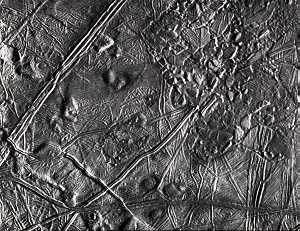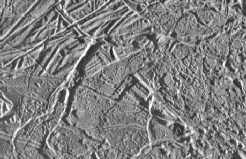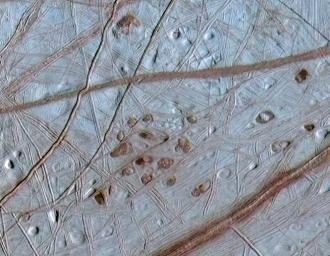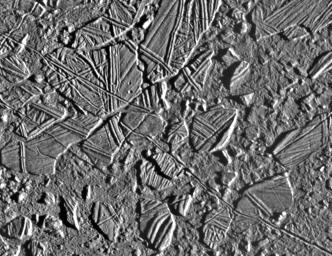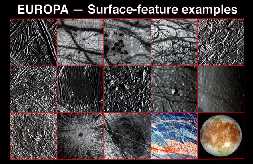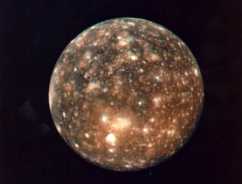An image of Europa's surface, showing many features indicating the presence of a submerged ocean
Click on image for full size
Image courtesy of NASA
Click on image for full size
Image courtesy of NASA
Does Europa Have an Ocean?
The surface of Europa shows many signs of that there may be an ocean hidden underneath: * flooded areas * 'freckles' * 'rafting' * 'mushy' craters, and * regions of spreading. These clues make it pretty clear that there is an ocean under the icy surface of Europa.Last modified September 18, 2003 by Roberta Johnson.


